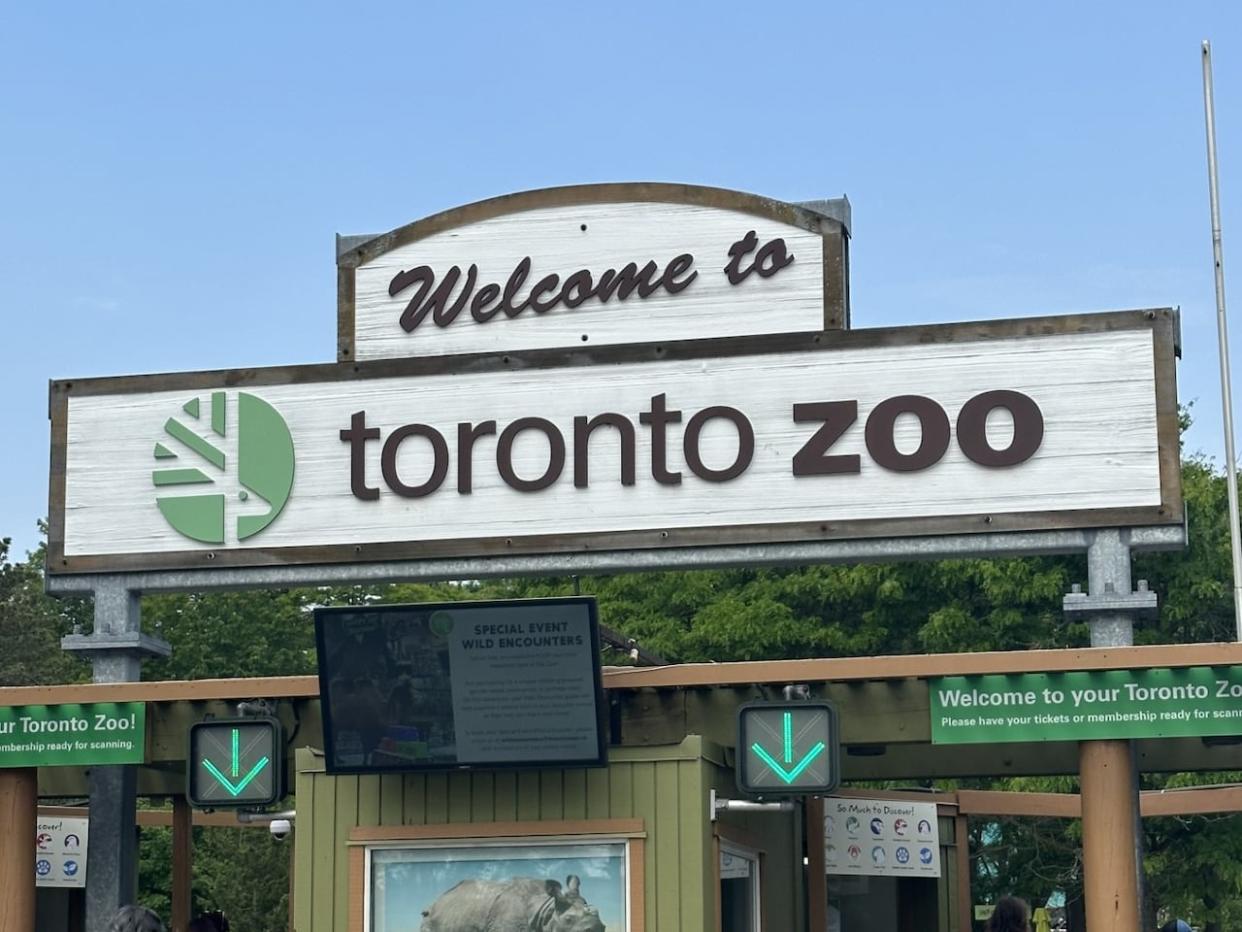Toronto Zoo sees climb in attendance, revenue since COVID-19 pandemic

The Toronto Zoo is seeing an increase in attendance and revenue this year, among other Ontario attractions that are also reporting a similar trend.
CEO Dolf Dejong said despite attendance and revenues facing major hits in the past few years as a result of the pandemic, the zoo is seeing figures climb significantly this year.
"A site like ours, [on] a busy day, I've seen as many as 19,000 people in a single day. Right now, we're approaching 35,000 [visitors]," Dejong told CBC Toronto.
The zoo is seeing a $1.6 million surplus in net new spending, according to a city report from last month, which highlights figures at the site in the past four months.
It has seen a spike in general admissions, membership, retail and parking sales, rides and rentals as well as food services. The report also noted that zoo camps are sold out for a second year in a row.
Dejong said the summer months usually carry the zoo until the rest of the year. He said attendance this year, however, started early.
"We were closed for almost nine months over two years, so to be here today is incredibly rewarding and we're just so grateful to the city and the community, and hope we can continue to deliver for them," Dejong said.
"But coming out of the pandemic, people didn't just see it as a good place to visit once, they really subscribed and started coming frequently and they were making up about a third of our guests."
It's projecting to end the year with a surplus of $1.8 million, according to the report.
Spike in visitors at attractions reported across Ontario
Attractions Ontario, which represents about 550 tourism businesses in the province, said most of its members are reporting high numbers across the board this season.
CEO Troy Young said there has been "cautious optimism" among members of the sector for the past two years.
"It appears that many of our members are having a really good summer," Young said.
Young said many of the association's members have seen a return of pre-pandemic numbers, with some even reporting higher numbers than before, according to an internal survey conducted at the end of July. He adds that small museums in particular, are seeing an influx of visitors compared to 2019.
The survey, which collected responses from 36 members, showed local traffic was "relatively high" this season, Young said.
Nearly 82 per cent of respondents said their attendance was higher or similar to last year, while roughly 36 per cent said their visitor numbers were significantly higher.
He noted that members seeing a decline in attendees are citing inflation as the main reason.

Attractions Ontario CEO Troy Young says an internal survey, which collected responses from 36 members, showed local traffic was 'relatively high' this season across the province. (Patrick Morrell/CBC)
Young said interestingly, the association noted there was no difference in attendance number trends between indoor or outdoor attractions.
According to ajoint report released December 2022 by the Ontario Chamber of Commerce (OCC) and the industry, the province's tourism industry is not expected to fully recover from the pandemic until 2025.
Tourism sector still 'long way off' from full recovery
The OCC and Tourism Industry Association of Ontario report said tourism businesses were generating 64 per cent of the revenues they saw in 2019, on average, and seven in 10 report they have taken on debt to stay afloat.
"We're still a long way off of fully returning as an industry, and even having a good year this year doesn't make up for the pandemic losses," he said.
"It's a positive trend, but we [still] have a long way to go."
Ellen Flowers, the marketing and communications manager for the Elgin and Winter Garden Theatre Centre in Toronto, said their public tours ,which run four times a week, have been consistently selling out.
"We're doing really well this summer … it's looking very positive," Flowers said.
Flowers said the theatre used to do just one tour a week, but due to rising demand, it has been pushed to four times a week.
"We're getting a lot of tourists. We do get a lot of locals as well, or other people from Ontario or the rest of Canada, but I'm always very surprised when Europeans show up at our doors," she said.

Christopher Bloore is president and CEO of the Tourism Industry Association of Canada. (CBC)
As a whole, the tourism sector is slowly but surely returning to pre-pandemic levels, said Christopher Bloore, CEO of Tourism Industry Association of Ontario.
Bloore said spending in the sector is currently at about 96 per cent of spending in 2019.
"We're about a $36 billion industry, so that number is very encouraging," Bloore said. "We're gradually getting closer and closer to where we need to be."
Attractions still dealing with pandemic-related debt
Canada saw about 373,000 visitors from other countries in April, up 55 per cent from the same month last year, Bloore said.
He said the sector is "pleasantly surprised" at the levels of international and local visitors it is currently experiencing.
"We're at about 75 per cent of total international visitors from before the pandemic," he added.
Bloore said inflation and the cost of living crisis are continuing to affect consumers' decision on how much they spend on vacation, whether they are local or international visitors.
He said with the added impact of the labour shortage in the tourism industry and labour costs being driven up, much of the sector is still plagued with debt levels due to the pandemic.
In January, CBC News obtained the list of companies which received grants of up to $695,000 from the Ontario government's Tourism Recovery Program to compensate for pandemic losses.
Bloore said the industry is working with the federal government to relieve some of those debt levels.
"We're almost in the final home straight of this recovery. We just got a little bit further to go right now," he said.


